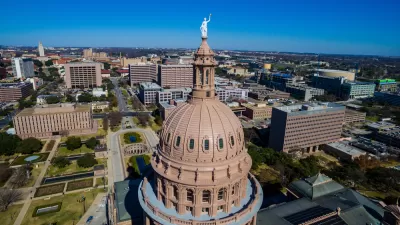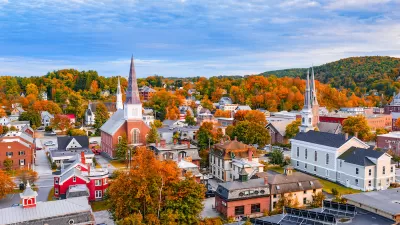For upzoning efforts to result in a significant rise in new housing units, cities and states must do more than just change zoning codes to ensure missing middle housing is easy and affordable to build.

A new paper from David Garcia, Muhammad Alameldin, Ben Metcalf, and William Fulton outlines the barriers to building more ‘missing middle housing’ and the benefits of encouraging more construction of this housing type.
Although many cities and states are moving to legalize mid-density buildings, these zoning changes may not be sufficient to result in a large number of new housing units. Design and utility requirements, impact fees, and other factors also have a significant impact on how many new homes will be created.
The paper examines the history of missing middle housing in the United States and the benefits of this type of development, describes findings from two roundtable discussions with developers, and provides several recommendations for addressing challenges.
The authors’ recommendations include: states should assess other development code changes that can spur missing middle development; cities should examine their land use regulations to ensure building codes don’t impede missing middle production; and cities should consider going above and beyond state regulations to encourage more housing production. Ultimately, “parallel policy changes” are needed alongside zoning reform if reform efforts are to provide a real path to boosting housing affordability.
FULL STORY: Unlocking the Potential of Missing Middle Housing

Maui's Vacation Rental Debate Turns Ugly
Verbal attacks, misinformation campaigns and fistfights plague a high-stakes debate to convert thousands of vacation rentals into long-term housing.

Planetizen Federal Action Tracker
A weekly monitor of how Trump’s orders and actions are impacting planners and planning in America.

Chicago’s Ghost Rails
Just beneath the surface of the modern city lie the remnants of its expansive early 20th-century streetcar system.

Bend, Oregon Zoning Reforms Prioritize Small-Scale Housing
The city altered its zoning code to allow multi-family housing and eliminated parking mandates citywide.

Amtrak Cutting Jobs, Funding to High-Speed Rail
The agency plans to cut 10 percent of its workforce and has confirmed it will not fund new high-speed rail projects.

LA Denies Basic Services to Unhoused Residents
The city has repeatedly failed to respond to requests for trash pickup at encampment sites, and eliminated a program that provided mobile showers and toilets.
Urban Design for Planners 1: Software Tools
This six-course series explores essential urban design concepts using open source software and equips planners with the tools they need to participate fully in the urban design process.
Planning for Universal Design
Learn the tools for implementing Universal Design in planning regulations.
planning NEXT
Appalachian Highlands Housing Partners
Mpact (founded as Rail~Volution)
City of Camden Redevelopment Agency
City of Astoria
City of Portland
City of Laramie





























